Just so you know, as an Amazon Associate we earn from qualifying purchases made via bold red links, buttons or images.
Last Updated on December 8, 2023
Coffee is an essential part of the day for millions of people around the world, and there’s a good chance it is for you, too. But for some people, the acidity of coffee causes problems. From acid reflux to damaging tooth enamel, coffee acidity can harm your body. If this is the case for you, then you could try one of a number of low acid coffee brands.
The producers and roasters of these coffees use a variety of methods to lower the acid content. That reduced acidity can make a difference for people who are vulnerable to the effects of acid.
17 low acid coffee brands you should try
We’ve tested a number of low acid coffees on the market, and found 17 that you may want to try.
The best low acid coffees are:
- Lifeboost Coffee
- Volcanica Coffee
- Java Planet Colombia Organic
- Lucy Jo’s Organic Mellow Belly Low Acid Blend
- Tieman’s Fusion Coffee Low Acid Dark Roast
- Simpatico Low Acid Dark Roast
- HealthWise Colombian Supremo Low Acid Ground Coffee
- Mommee Coffee Half Caff Low Acid Coffee
- Golden Ratio Gold Roasted Coffee
- Tyler’s No Acid Organic Ground Coffee
- Clean Coffee Co.
- trücup Low Acid Coffee
- Spirit Animal Coffee
- Quills Coffee Southern Gothic Cold Brew Blend
- Mavericks Coffee
- Mastermind Coffee Low-Acid Brain-Enhancing Espresso Roast
- Kava Reduced Acid Instant Coffee
These brands use several methods for reducing the acidity of their coffee, giving the resulting coffees unique characteristics. Depending on your own tastes, one or more of these might be the right low acid coffee for you. We’ll discuss each farther down this page.
Best low acid coffee
The best low acid coffee we’ve found is Lifeboost Coffee.
This is single-origin coffee grown under shade in the mountains of Nicaragua, by farmers who are paid fairly and use environmentally friendly growing practices.
The result is coffee that Lifeboost claims is the healthiest on the planet. We can’t confirm that, but we can confirm that its pH level is around 6.0 which is only slightly more acidic than water.
We can also assure you that this smooth-tasting coffee will fill you with warm flavors of caramel and chocolate. It’s the real deal, it just happens to be low in acid.
You can learn more in our roundup farther down this page.
Coffee with the least acid
If you’re looking for the downright lowest acid coffee you can find, we have to give the nod to Tyler’s No Acid.
It claims to be the world’s first totally acid-free organic coffee, achieving the same pH as water through a top-secret process they call Z-Roasting.
We have more on Tyler’s No Acid farther down the page.
What is low acid coffee?
Low acid coffee is coffee that has a pH measurement of 5.5 or higher. If you remember high school chemistry, acidity is measured on a scale of 1 to 14 with 7 being neutral, like water. Anything below 7 is acidic, anything above it is alkaline.
Most regular coffee sits between 4.5 and 5. Low acid coffees are grown, treated and/or brewed to get as close as possible to the neutral level of water. When it’s done well, the acidity comes in at around 6.
These coffees are increasing in popularity, because many people find coffee upsets their stomach or gives them heartburn. The acidity of coffee can contribute to this.
Types of acids in coffee
Coffee naturally contains a lot of acids, some of which undergo changes as the coffee is processed and roasted. These are the most important acids in coffee:
Citric Acid
Citric acid has a sour and fruity taste, which you will know from lemons, grapefruit and oranges. In coffee, its presence comes straight from the plant.
Malic Acid
Malic acid is this acid you find in pears and apples, especially tart green apples. Its tartness differentiates it from the sourness of citric acid.
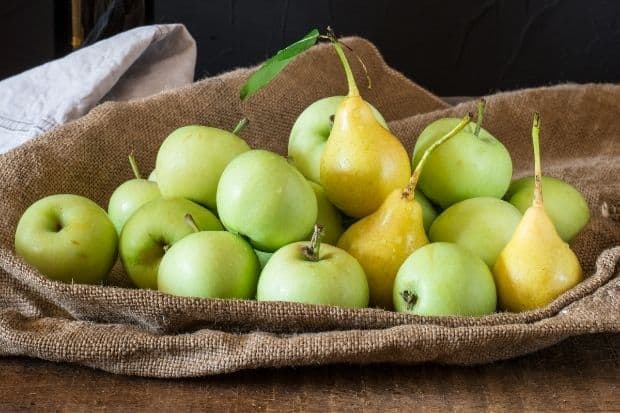
Acetic Acid
You know acetic acid from vinegar. It practically is vinegar. Your coffee picks this up during post-harvest fermentation, and during roasting.
Lactic Acid
Lactic acid is the one you find in dairy products, and an abundance of it in certain coffees will give the coffee a creamier texture.
Chlorogenic Acid
Coffee has a lot of chlorogenic acids, which carry a bitter taste. During roasting these acids are broken down further into quinic acid and caffeic acid.
Quinic Acid
Quinic acid is very bitter and astringent, so when you roast those bitter chlorogenic acids you’re creating something even more bitter. But slight bitterness is part of coffee’s charm.
Caffeic Acid
As you may have guessed by its name, caffeic acid is closely related to caffeine. It contributes greatly to the antioxidant properties for which coffee is so well known.
Phosphoric Acid
If your coffee gives you a bit of a tingling sensation on your tongue like sparkling wine or soda, that’s the phosphoric acid talking.
What determines acidity of coffee?
The acidity of your cup of coffee is determined by variables that come into play all the way along its lifespan. It starts in the soil where the coffee plant was planted and ends with how you brew it in your kitchen. There are many other factors in between.
Geography is a big factor. For example, Kenyan coffees are known to have more malic acid, while Colombian coffees have more citrus acid. So you might taste apple notes in the former, and lemony notes in the latter.
Bean type
Most of the coffee you drink comes from two main species of coffee plant: Arabica and Robusta. Robusta tends to contain more chlorogenic acids than Arabica, so it is typically more acidic.
Growing conditions
Altitude and soil are the big acidity factors that come into play as coffee plants mature.
Altitude: All other things being equal, coffee grown at higher altitudes will be more acidic and coffee grown at lower altitudes will be less acidic.
Soil: Coffee plants like acidic soil generally, which is why it’s so hard to find low acid coffee! But soil does vary in its acidity, and soil that’s lower in acid will produce a low acid plant and bean. Volcanic soils are particularly acidic.

Growing regions and acidity
We hesitate to say that coffees from any one growing region are less acidic than those from another region. As we’ve pointed out, many factors contribute to acidity. It’s pretty easy for any regional generalizations to be overridden by conditions on a specific farm.
That said, some regions do have reputations for lower and higher acidity. Just keep in mind that they may not apply to all coffees from the region.
Since you came here looking for low acid coffees, we’ll rank the regions from lowest acid to highest:
- Asia (lowest acid)
- South America
- Central America
- Africa (highest acid)
Processing method
After being picked, coffee beans are generally processed in one of two ways:
- washed or wet processing
- natural or dry processing
Washed or wet processing involves removing pulp from the beans soon after they are harvested and resting them in a fermentation tank for a few days. Lingering sugars from the coffee pulp ferment slightly during this period, creating acetic acid and more pronounced acidity for the eventual coffee.
Natural or dry processing involves drying out the entire coffee cherry before the skin and fruit are hulled. With no fermentation period, this method tends to produce less acidic coffees.
Roast
The darker you roast coffee beans, the more you break down their chlorogenic acids and other acids within the bean. (You will increase the quinic acids through roasting, but quinic acids actually bring a bitter, astringent taste that is quite the opposite of the sour taste typically associated with acids.)
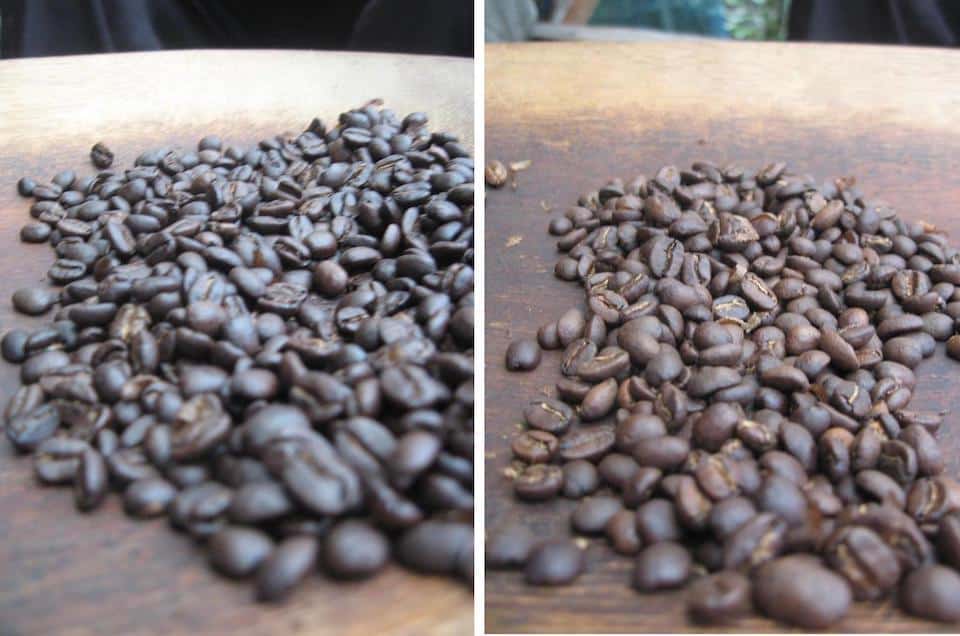
Again, all other things being equal, a dark roast will be less acidic than a medium or light roast.
Brewing method
Finally, the method you use to brew your coffee will affect its acidity. Acids are among the first compounds out of the bean particles when they come into contact with hot water. So if you halt your brew before you’ve fully extracted the beans (or grind too coarsely), your coffee will be more acidic. A longer brew time (or smaller grind particles), allows more compounds to come out of the bean and balance the acids.
Signs that your coffee is too acidic for you
Not everyone has a problem with coffee acidity. In fact, coffee only clocks in at a pH level of about 5, which is less acidic than many fruit juices.
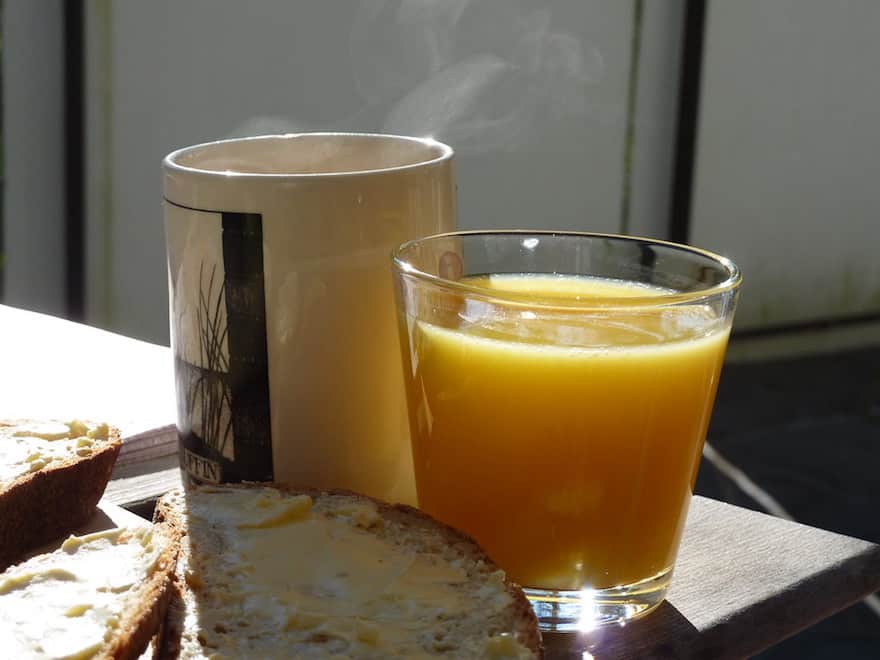
But many people drink a lot of coffee. The repeated exposure to coffee’s acidity can take its toll. You may have a sensitive stomach or just happen to be vulnerable to foods with a lot of acid.
The symptom most common to those who react badly to coffee acid levels is probably acid reflux, or gastroesophageal reflux. These people feel what’s commonly known as heartburn: a feeling of pain in the chest where the esophagus meets the stomach.
Another area where the acidity of coffee can cause problems is in tooth enamel. If your visit to the dentist reveals problems with your tooth enamel, it might be due to your coffee consumption.
Why does coffee cause acid problems for some people?
Every person is wired differently, and so are their stomachs. If coffee’s acidity bothers you but not your neighbour, much of that is directly attributable to how your stomach reacts to acids, and to caffeine in general.
Every person’s gut chemistry varies, depending on the types and concentrations of healthy bacteria living in the stomach, the levels of stomach acids produced, and other factors.
For some people, introducing additional acids to the stomach can cause a problem with the overall composition, making the stomach overly acidic. This may cause an issue as mild as a slightly upset stomach, all the way up to full-blown acid reflux.
There’s no way of knowing exactly how your stomach is wired, other than by observing your reactions to coffee and other acidic foods and beverages.
Another factor is the caffeine content in coffee. When you ingest large amounts of caffeine, it can cause your muscles to relax or tighten. For some people, it’s the esophagus that relaxes, allowing stomach acid to spill out.
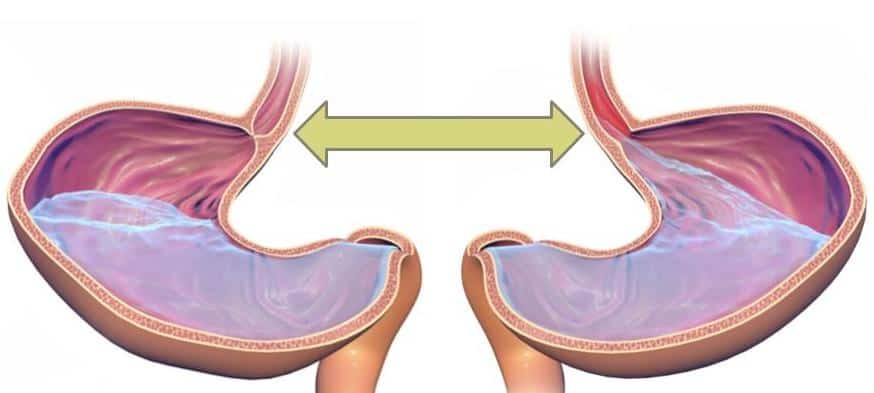
Finally, coffee’s impact on your tooth enamel depends on how strong your enamel is, as well as lifestyle and environmental factors.
One of the biggest causes of tooth enamel erosion is the consumption of acidic beverages. While coffee can contribute, it’s not nearly as bad as sodas and fruit drinks. If you consume all of the above in significant quantities, you’re more likely to have problems with coffee’s acidity affecting your enamel.
How to brew low acid coffee
There are few things you can do during and after the brewing process to ensure that the acid content of your coffee is as low as possible.
Test your water
Although water generally has a neutral pH, whatever system you draw from may have slightly more acidity. A good place to start is to test it with a pH strip. If your water is acidic, you won’t get the full benefits of whatever low acid coffee you choose. You may need to try a less acidic bottled water for your coffee, or use additives (see below).
Longer brew times
Brewing methods such as French press which require longer brew times will help you keep the acid content down. People love cold brew for a low acid caffeine kick, because it brews overnight in the refrigerator.
Finer grind
To balance out the acid that leaves the bean first during brewing, you have to make sure you extract the beans quite fully. This is easier to do with a fine grind.
Additives
Mixing in crushed eggshells with your ground beans for brewing can help, as eggshells are quite alkaline. You can also add pH neutralizers after brewing. Baking soda from the cupboard is a good one, relatively tasteless, that will definitely raise the pH.
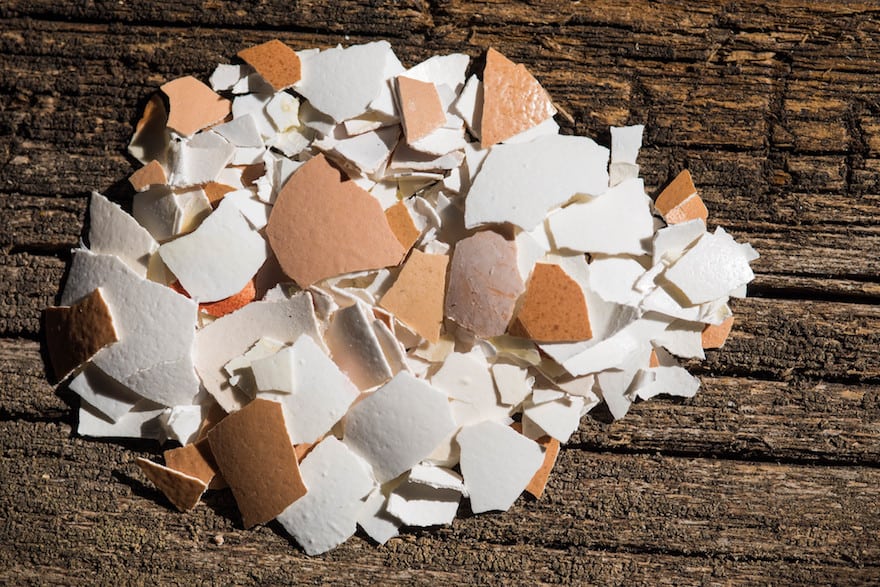
Similarly, adding a pinch of salt while brewing coffee will slightly reduce acidity.
You could also try a non-dairy milk. Almond milk is our first choice, because almonds are alkaline and almond milk froths well. Regular milk may help a little bit, but not as much as you’d hope. It contains lactic acid, and is slightly on the acidic side of neutral. Not as acidic as your coffee, but more so than almond milk.
Is cold brew coffee less acidic?
A common belief is that cold brewing coffee will reduce its acidity. However, this is mostly false. It comes from a misunderstanding of the difference between coffee tasting “acidic” versus its actual pH, or acidity level.
Cold brewing refers to the practice of steeping coffee grounds in water at room temperature rather than using hot water. The brewing process typically takes several hours.
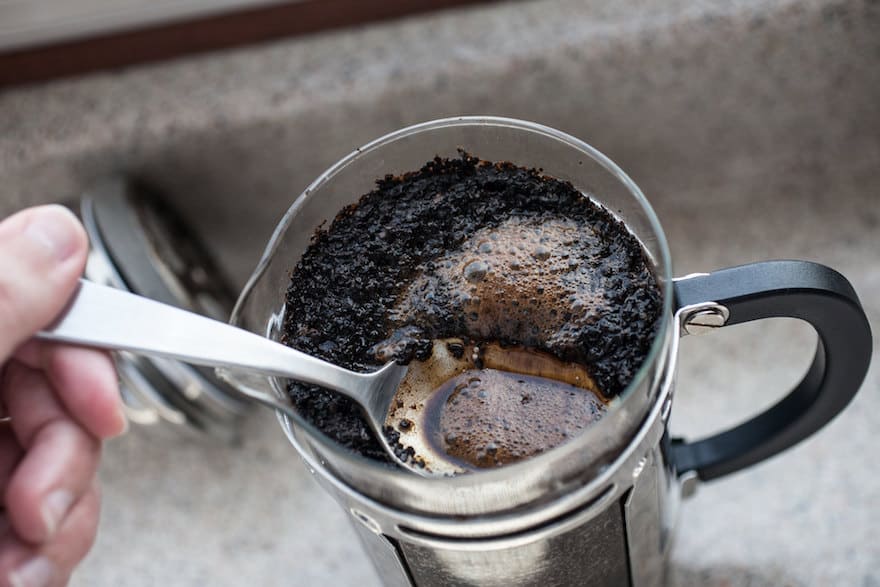
It’s absolutely true that cold brewed coffee tastes different than traditionally prepared coffee. And it’s also true that you’ll often taste fewer acidic notes in cold brewed coffee. This has led many people to conclude that cold brewed coffee is low in acid.
However, a 2018 study at Thomas Jefferson University demonstrated that the pH levels of cold brewed coffee are virtually the same as those of traditionally brewed coffee. Since pH level is what causes the issues people have with coffee acid, cold brewing isn’t really a solution.
Benefits of low acid coffee
If you find yourself a low acid coffee that you enjoy, you have a lot to look forward to.
- Better digestion: Low acid coffee should produce much less discomfort for people with ongoing gastrointestinal problems. Bloating and symptoms of irritable bowel syndrome (IBS) should be reduced, and sensitivities to gluten or lactose are less likely to flare up than with regular coffee.
- Reduced acid reflux: Low acid coffee can minimize the heartburn that occurs when your sphincter allows stomach acid to escape into your esophagus.
- Fitness: What does low acid coffee have to do with fitness? Well, it’s related to acid reflux. Do you ever have those moments during a workout when something escapes the top of your stomach and heartburn kicks in? It’s tough to continue your workout. With low acid coffee, this will be less likely to occur.
- Dental health: Low acid coffee will cause less erosion of the enamel on the surface of your teeth, and less discoloration of them.
How low acid coffee is produced
Brands that offer low acid coffee achieve this result primarily in two different ways. You may hear the terms “inadvertent” or “treated” low acid coffee.
Inadvertent low acid coffee
Inadvertent low acid coffee simply refers to coffee that is naturally low in acid, based on its heritage and the conditions in which it is grown. If the soil, the climate and the origins of the plant are the main reason for its low acidity, that’s inadvertent low acid coffee.
Treated low acid coffee
Treated low acid coffee undergoes interventions after harvest to bring down the acid content. Usually this involves processing techniques like washes or chemical treatment, but it could also involve an especially slow roasting process.
How to choose a low acid coffee
Choosing a low acid coffee can be tricky, because acid concentration is not typically listed on the package like some nutritional information.
If you’re unsure, there are three things to look for that usually point toward a low acid coffee:
Arabica beans
We’ve covered the fact that Arabica coffee is usually less acidic than Robusta. If you’re choosing 100-per-cent Arabica coffee, you’re off to a good start.
Fine grind
If you’re shopping for pre-ground coffee, you want to lean toward a medium or fine grind rather than a coarse grind. Acids are among the first compounds to leave the bean during brewing, and if the grounds are too coarse, you don’t extract enough of the other stuff to balance out the acid.
Roasted in small batches
OK, this one doesn’t have much to do with acidity. Coffee roasted in small batches is just fresher, and when it comes to coffee, fresher is better!
Our Top 17 recommendations for low acid coffee brands
Of the low acid coffees we evaluated, here are 17 that we suggest. Within these 17 brands, we’re confident you’ll be able to find at last a couple that suit your tastes. We’ve included one brand of instant coffee.
Lifeboost Coffee
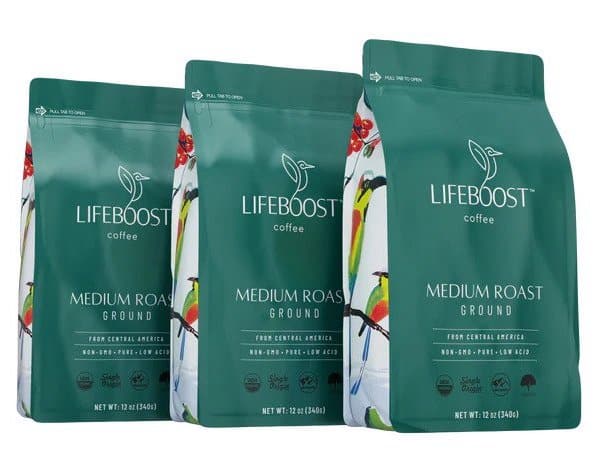
Check availability
We gave the nod to Lifeboost as our top pick earlier in this article because we love a low acid coffee with flavor that equals some of the finest specialty coffees—especially when it’s produced in such a sustainable way.
Lifeboost is shade-grown above 5,700 feet in the mountains of Nicaragua. It’s certified organic by the USDA, with not a pesticide in sight. Lifeboost also has their coffee tested by a third party to ensure it is free of mold and mycotoxins. Their mission is to provide the healthiest coffee on the planet.
With Lifeboost, not only do you get a great-tasting, sustainable coffee, you also get quite a few options when it comes to selection and delivery. They roast their coffee in small batches and offer a light, medium and dark, as well as a decaffeinated version and capsules that are compatible with Keurig machines.
You can subscribe to receive one, three or six bags at a time (12 ounces each), with whatever delivery frequency you choose between one and 12 weeks. Once you figure out how fast you go through it, you can arrange to have fresh coffee dropped on your doorstep every time you run out!
They offer free shipping on orders over $50, and there’s no commitment—you can stop or modify your subscription at any time.
Lifeboost costs a little more than others on this list, but we think the quality of the coffee and the company’s commitment to their farmers and the environment makes it worthwhile.
Volcanica Coffee Company Low Acid Medium Roast
Check availability
We’re not sure you’ll find a better, broader selection of low acid coffee than that offered by Volcanica Coffee.
If you filter for low acid coffees on their website, you’re greeted with an array of 23 coffees from a variety of regions, all ranging in pH from 5.6 to 5.2.
While many of these are low in acid, their official low acid blend is their Low Acid Medium Roast. It’s a blend of Arabica, primarily from Brazil and Sumatra.
It’s produced by starting with naturally low acid beans, which are washed and then roasted very slowly.
The resulting brew gifts you notes of chocolate, nuts and tangerine.
Java Planet Colombian Organic
https://m.media-amazon.com/images/I/51v0sAOiV9L.jpg
Check availability
Java Planet’s Colombian Organic is an ideal pick for someone who appreciates the bright, acidic flavours of coffee but doesn’t want the acid levels of normal coffee.
Their coffee is grown in Colombia, and is both organic and fair trade. Java Planet is a small, family-run coffee producer, and their beans are of uncommonly high quality.
The resulting coffee has notes of fruitiness and chocolate to balance out the toasty elements commonly found in coffee. Its texture is smooth and rounded, and the overall taste is balanced for those who prefer lighter roasts.
Note that Java Planet sells its coffee beans unground, so you’d need to be comfortable grinding them yourself or taking them to be ground by a professional.
All in all, Java Planet is a great selection for people who aren’t big fans of the more burnt, stronger taste of darker roasts. If you’re looking for a bright flavour with distinctive notes of coffee acids without having to deal with the effects of high acid content, Java Planet may be what you’re looking for.
Lucy Jo’s Coffee Mellow Belly Low Acid Blend
https://m.media-amazon.com/images/I/51LXBO4gyKL.jpg
Check availability
Lucy Jo’s is another small, family-run business, importing coffee beans from Indonesia and Brazil.
They achieve their low acid status by a combination of two factors: First, they use Arabica coffee beans grown and harvested in lowland locations. Arabica beans are the coffee beans with the lowest naturally occurring acid levels. And growing coffee at lower altitudes results in a less acidic coffee.
Then, they use a slow roasting process similar to—although not quite as intensive as—the slow roasting Puroast uses for their low acid coffee.
Lucy Jo’s is a medium-dark roast, and it has the rich body and characteristic coffee taste of many dark roasts. The flavour is often described as having buttery and brown sugar notes, although people who like exceptionally bold dark roasts may find this one a bit mild for their taste.
If you’re looking for a dark roast that doesn’t go crazy with bitterness, Lucy Jo’s may be a good selection.
Tieman’s Fusion Coffee Low Acid Medium Roast
https://m.media-amazon.com/images/I/41d2VjhTcSL.jpg
Check availability
Tieman’s Fusion Coffee medium roast is a somewhat unorthodox entry on the list, given that it’s a fusion of coffee and tea.
For people who want a straight-up cup of coffee with nothing fancy or out of the ordinary, this might not be the right choice. But for those willing to experiment with something interesting, it’s a real possibility.
In addition to being low acid, Tieman’s Fusion Coffee blends their medium roast coffee with rooibos red tea and matcha green tea. They also infuse it with goji berry powder, a powder known for its anti-inflammatory properties.
The resulting flavour is smooth and mild, if not exactly what a pure cup of coffee generally tastes like. But it’s certainly close enough that coffee lovers will be able to enjoy it if it fits the flavour profile of the coffee they generally like.
If stomach problems are the reason you’re seeking out low acid coffee, the goji berry powder and the higher pH of this coffee offer an alluring combination.
Simpatico Low Acid Dark Roast
https://m.media-amazon.com/images/I/41oCPiHWTFL.jpg
Check availability
Simpatico import their Arabica beans from Oaxaca, Mexico, where they’re shade-grown at low altitudes. As a result, they’re naturally lower on acid, and the roasting process further reduces acid levels.
Simpatico is committed to delivering a naturally produced coffee bean, from the growing process to harvesting, sorting and shipping all the way to roasting. Their farmers don’t use any pesticides or artificial fertilizers, and the coffee is grown naturally and harvested using traditional methods.
In terms of flavour and body, Simpatico Low Acid Dark Roast is what you would expect from a traditional dark roast. It’s got a very full body, with rich coffee flavour that can veer from toasty to more burnt. Presumably, if you’re buying a dark roast, you like that particular flavour. If so, Simpatico has what you’re looking for.
And if you care a great deal about the production values that go into bringing coffee to your cup, Simpatico is an excellent choice.
Healthwise Colombian Supremo Low Acid
https://m.media-amazon.com/images/I/51JyOuM7W8L.jpg
Check availability
HealthWise Colombian Supremo Low Acid Ground Coffee takes a scientific approach to creating a low acid version of coffee. Their secret to creating a low acid coffee is their roasting process, which they have trademarked.
This process, which they call “TechnoRoasting,” reduces the acid levels of the resulting coffee significantly while preserving micronutrients and minerals. HealthWise is able to produce a coffee with a pH of around 6.2. For reference, a glass of water is 7.0, and a normal coffee is around 5.0. A higher number means less acidic.
It’s not an understatement to say that HealthWise is possibly the best pick for people who are looking to drastically cut down on acidic beverages. The reduction in acid levels they’ve achieved is far more significant than a coffee like Simpatico, which relies mostly on the beans themselves to cut down on acid levels.
When it comes to flavour, we would argue that some of the other coffees on this list are more complex and nuanced than HealthWise. It has a nice smooth, full bodied flavour, but it’s lacking in complexity and can seem muted in comparison to other coffees we’ve tried.
If your No. 1 priority is reducing acid levels, HealthWise might be the best choice.
Mommee Coffee Half Caff Low Acid Coffee
https://m.media-amazon.com/images/I/41xKPgpNXtL.jpg
Check availability
Mommee Coffee is a coffee specifically made to be safe for pregnant women to drink. This means it’s low acid, additive-free and low on caffeine. If you’re looking for the best low acid decaf coffee, give it a try. You might find “half caff” is enough.
While Mommee Coffee is intended for pregnant women, anyone who’s looking for those particular attributes can appreciate it. It’s organic and contains no potentially harmful chemicals that could damage a baby’s development. The beans are soaked in water before roasting to lower acid and caffeine levels.
Mommee Coffee’s flavour doesn’t stack up all that well compared to the other coffees on this list. That’s not to say it’s unpleasant, it’s just not very strong or distinctive. Mild would be a good description. Which might be up your alley, depending on your tastes.
If you’re pregnant, thinking about becoming pregnant, or simply prefer a mild cup of low caffeine, low acid coffee, Mommee is a reasonable choice.
Golden Ratio Gold Roasted Coffee
Check availability
Golden Ratio Gold Roasted Coffee is an unusual product but worth a try if you’re looking for something really low in acid.
Just don’t expect it to taste like the coffee you’re used to. It looks and tastes like something closer to tea, and even comes in single-serve tea bags that you steep in water.
It is coffee, though—ethically sourced and fair trade—with an even higher caffeine concentration than regular coffee.
Their ‘traditional’ flavor is Gold, but they also have some wacky flavored options like Chai Spiced Gold and Vanilla Coconut Gold.
This is a relatively new product that is only available online.
Tyler’s No Acid Organic Ground Coffee
https://m.media-amazon.com/images/I/51+t5ITdqfL._SL500_.jpg
Check availability
Tyler’s No Acid claims to be the world’s first totally acid-free organic coffee.
That’s right, their coffee has been tested at 7.0 pH, the same as water, making it one of the best coffees for acid reflux.
They achieve this through an all-natural roasting process that is top-secret, but they call it Z-Roasting. Apparently this process also retains twice as much caffeine as regular coffee, so that’s a double bomus.
It’s 100% Arabica coffee from Chiapas, Mexico, and you can buy it whole or pre-ground. They also have single-serve cups that are compatible with Keurig machines, in both regular and decaf.
Subscriptions are also available through their website.
Clean Coffee Co.
https://m.media-amazon.com/images/I/415NUlE8fOL._SL500_.jpg
Check availability
Clean Coffee Co.‘s Arabica beans are grown at 5,200 feet in the Papua New Guinea highlands, giving them a natural low acidity that requires no additional treatment during processing.
They check in at 5.21 on the pH scale—not super low acid, but certainly better than most regular coffees.
There aren’t any gimmicks here—just high-quality coffee that’s free of chemicals and mold, and relatively low on acid. A good choice if you’re not having huge problems, but just want to cut down on the acid a bit without compromising your coffee at all.
trücup Low Acid Coffee
https://m.media-amazon.com/images/I/41j38zKzUiL._SL500_.jpg
Check availability
We love a good umlaut. It adds a bit of mystery to any brand.
This Seattle outfit is a bit mysterious. trücup achieves their coffee’s 5.74 pH through a natural, proprietary process that they don’t reveal much about. I’ve heard it has something to do with steaming the acidic outer coating off the beans before roasting, but I can’t confirm that.
Their website also doesn’t provide much information about where their 100% Arabica coffee originates, but I understand it is not organic.
They do offer six different roast levels, which should satisfy just about any taste.
Spirit Animal Coffee
Check availability
Spirit Animal is another brand that just offers really clean coffee that is naturally a bit low in acid. It’s specialty-grade stuff, shade-grown at 5,000 feet in Honduras.
They source everything from independent small-scale farmers who own two hectares or less. Fair trade and organic.
The coffee is not only low in acid, but also free of mold and mycotoxins.
If you like it, you can order a subscription and keep it coming.
Quills Coffee Southern Gothic Cold Brew Blend
We’re hearing good things about this particular blend out of Quills Coffee in Louisville, Ky. (Don’t worry, it’s not grown there!)
The low acid Mexican and Colombian beans that go into the blend are naturally washed before roasting.
It comes out of the roaster as a smooth, comforting dark roast with plenty of chocolate and caramel notes.
As the name suggests, this coffee should make a really nice cold brew.
Mavericks Coffee
https://m.media-amazon.com/images/I/41+pgH4QMDL._SL500_.jpg
Check availability
Mavericks Coffee has a dark roast that measures an impressive 6.05 on the pH scale. The organic beans are sourced from Central and South America, meeting the fairtrade designation set by the Rainforest Alliance.
They’re wet-processed and slow roasted to yield a bold, smooth coffee, which you can buy as whole beans or pre-ground.
Mastermind Coffee Low-Acid Brain-Enhancing Espresso Roast
https://m.media-amazon.com/images/I/41HJ6usqO-L._SL500_.jpg
Check availability
We don’t know much about Mastermind, but we’ve thrown it on the list in case you’re interested. Haven’t tried it.
I mean, they’ve included a lot of colorful modifiers in the name of this coffee—they just don’t provide much information about how they keep the acid under control.
They say the coffee is 100% organic, grown at high-altitude, wet-processed and tested for mold. Who are we to doubt?
They sell only through a Shopify store, with no brick-and-mortar roastery that we’re aware of. Make of it what you will.
Kava Coffee: A Low-Acid Instant Coffee
https://m.media-amazon.com/images/I/51WEa0T4bSL.jpg
Check availability
Kava Reduced Acid Instant Coffee is the oldest and most reputable brand of low acid instant coffee on the market. They’ve been making it since 1962, and while it’s notoriously difficult to locate on supermarket shelves, you can find it pretty easily online.
It’s a godsend for instant coffee drinkers who have stomach problems. Kava uses a small amount of potassium hydroxide to neutralize acid in the coffee. Don’t be scared off by the chemical-sounding name—it performs a similar job to sodium bicarbonate, which is just regular old baking soda.
The nice thing is that it does this without creating bitterness, which can be an unfortunate side effect of taking acid too far in the opposite direction. Kava Coffee neutralizes 90 per cent of the acid—giving it half the acid of any other brand of instant coffee—without leaving a bitter taste. It’s full-flavored, with the same rich aroma as conventional coffee. So nice to wake up to in the morning.
You can make Kava Coffee just like you would any other cup of instant coffee. It’s as easy as boiling, spooning and stirring. It makes great iced coffee, too, and you don’t even have to boil the water. Just mix the crystals with warm water and then cool with a few ice cubes, and you’re good to go.
Given the choice, we’ll always take real beans over instant coffee, but if instant is your thing, then Kava reduced acid coffee has the most authentic taste in its group.
Conclusion
In the end, you know your own tastes and preferences best, and any of the above coffees might be the best choice for you. We would recommend Lifeboost Coffee or shopping around for an interesting bean from Volcanica, depending on your tastes.
Of course, if one of those two don’t quite suit you, feel free to try any of the others if the description seems to fit your tastes. Any could be worthy replacements for your normal coffee if you’ve made the choice to cut down on acid levels.
Low Acid Coffee FAQ
What is acidity in coffee?
Acidity in coffee can refer to flavor, or to actual acid. The term is used in both ways, which can be confusing. Coffees that taste bright, sparkly and citrusy are said to have nice “acidity” to them. That doesn’t mean they’ll upset your stomach. Coffees with a low pH are actually acidic. Those are the ones that can be problematic for some people.
Does regular coffee have acid?
Regular coffee has lots of acids in it, the main ones being citric, malic, acetic, lactic, chlorogenic, quinic, caffeic and phosphoric. These acids cause coffee to come in at around 5.0 or slightly lower on the pH scale, which is significantly more acidic than water.
Are there acid-free coffee brands?
Tyler’s No Acid organic ground coffee is the only acid-free brand we know of that claims to be measured at a neutral 7.0 pH level.
Does Starbucks have low acid coffee?
Starbucks does not market any blends specifically as low acid, but their dark roasts are likely to be slightly lower in acid content than most of their other blends. Grind the beans up with some eggshells to brew coffee that should be quite safe for your stomach.
Can you find low acid coffee in grocery stores?
You can find some low acid coffees in grocery stores, although a much wider selection is available online. Puroast Organic French Roast is the low acid coffee you’re most likely to find on store shelves, in our experience.
Is decaf coffee less acidic?
Decaffeinated coffee has lower levels of acidity than regular coffee, but still contains some acid.
Is instant coffee less acidic?
Instant coffee’s acidity will be the same as it is for regular coffee, because it basically is regular coffee that has been crystallized through freeze-drying or spray-drying. Neither of these processes does anything to reduce acid. If the base coffee for an instant coffee is low acid, then the crystals will be, too.
Is espresso less acidic than coffee?
Espresso is often less acidic than regular coffee for the simple reason that most beans roasted specifically for espresso are roasted longer and darker, which reduces their acidity. That said, you can make espresso from any kind of beans. The brewing process itself does little to impact acidity.
Is tea less acidic than coffee?
Tea is typically less acidic than coffee, although it depends on the kind of tea. Black tea typically measures around 6.4 on the pH scale, which would be quite low acid for a coffee. However, lemon tea would likely be more acidic than coffee.
Can baking soda reduce acid in coffee?
Baking soda can reduce the acid in coffee, and you don’t need much of it. Just a quarter of a teaspoon in your cup, or mixed in with your ground beans before brewing, can make a significant difference without noticeably altering the taste.



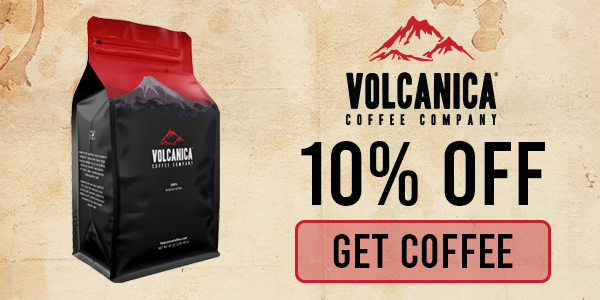
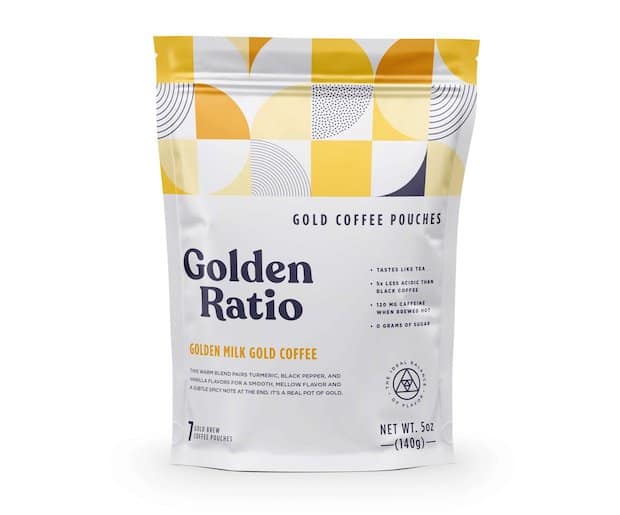
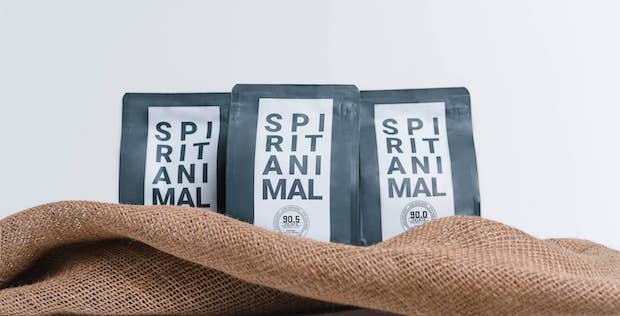
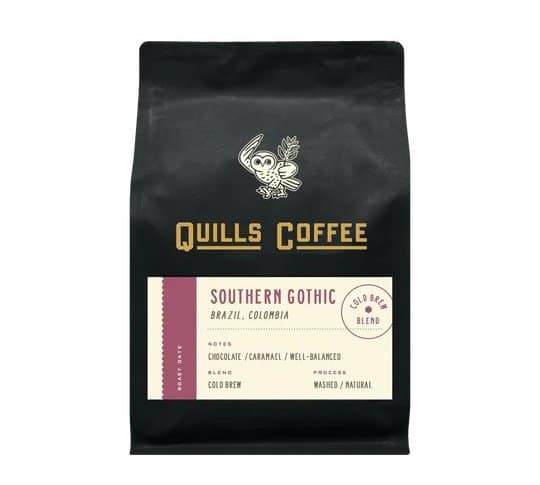

I am looking for an instant single serve coffee that is low in acid, not the cups for keurig
Kava coffee is one of my favorites. They have an instant coffee if that’s what you’re looking for? I’ve been drinking it about every day for the last 34 years!!
Where would I get this Kava??